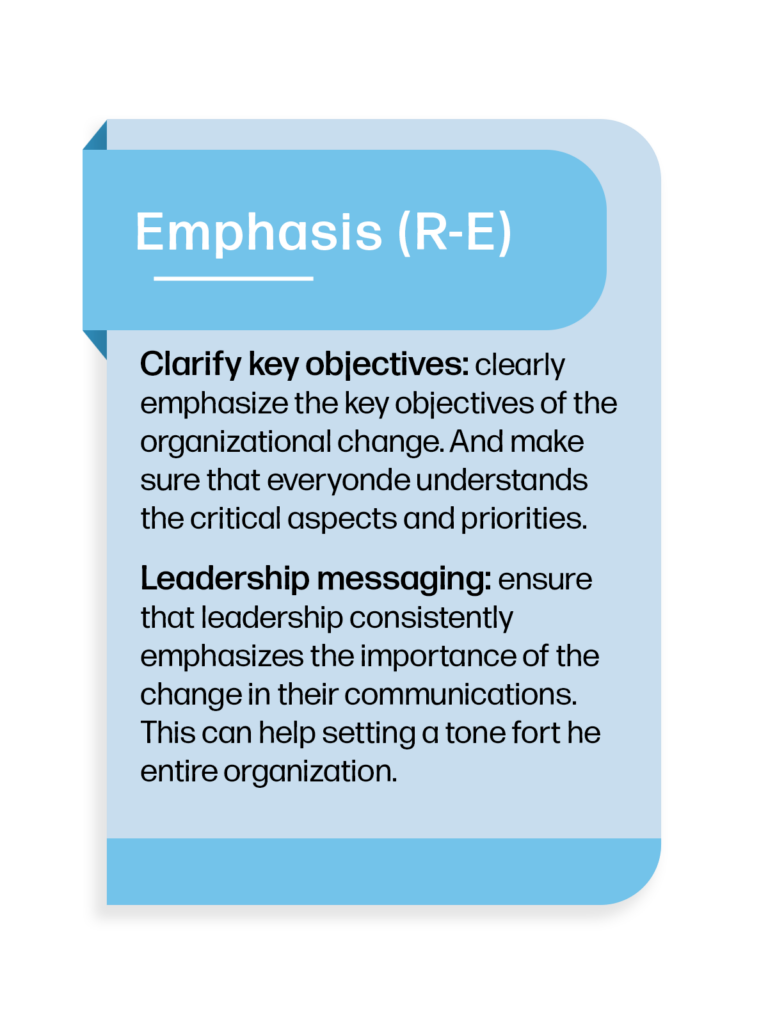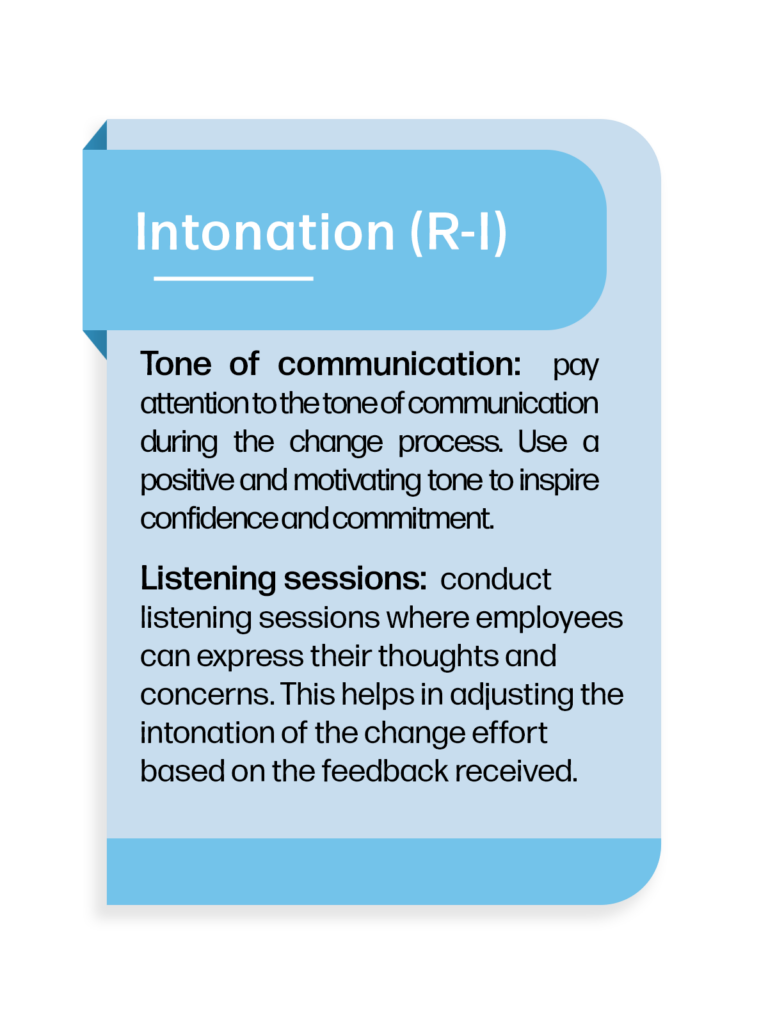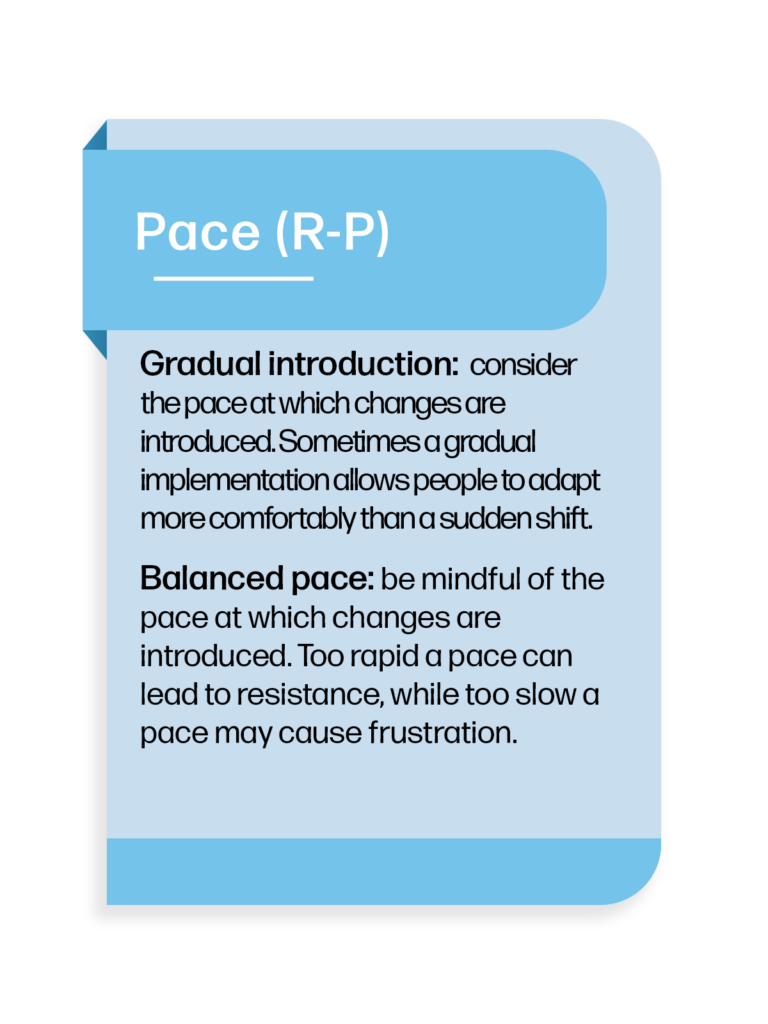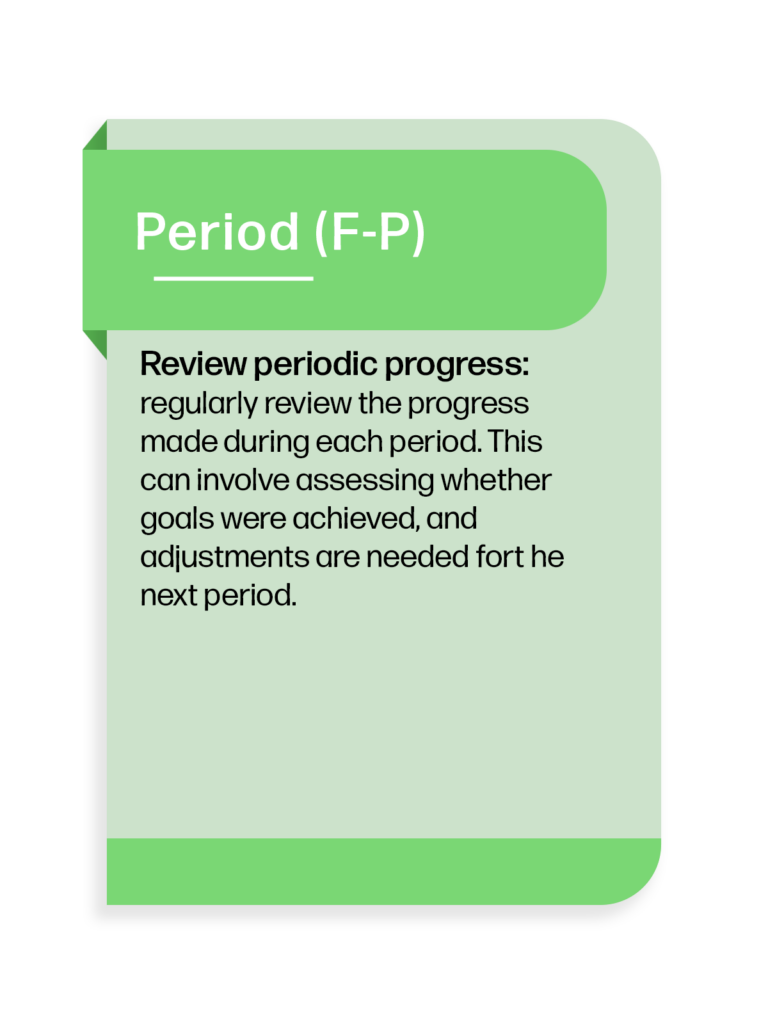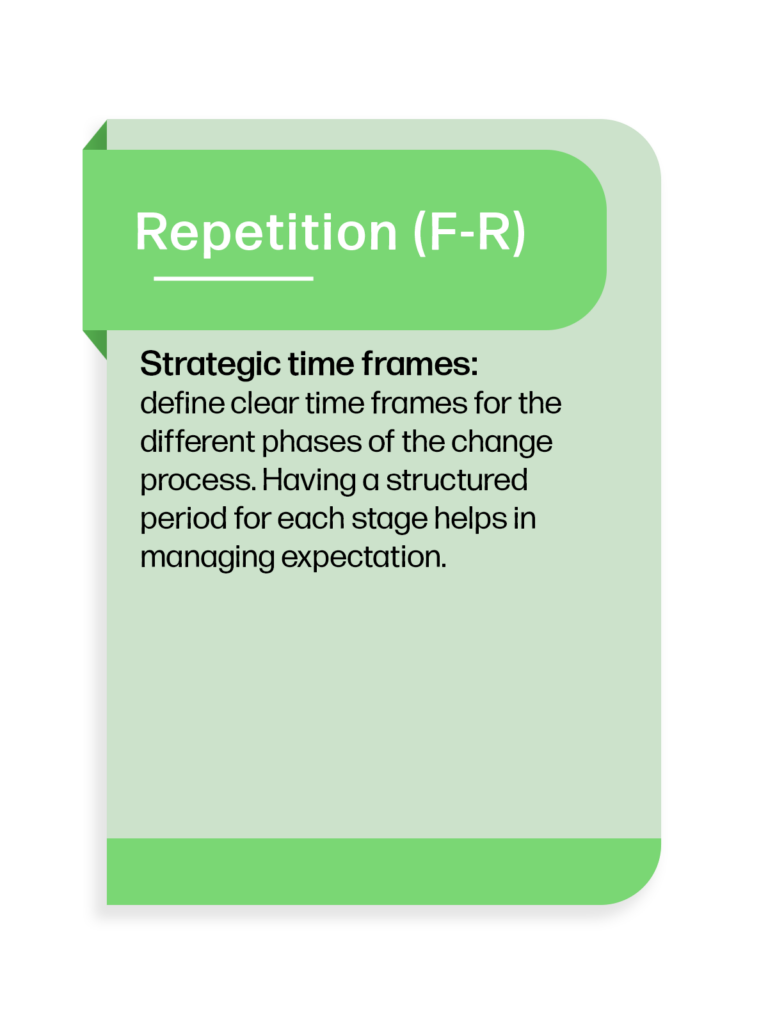What's your organizational rhythm?
Rhythmics of Organization Change
Introduction rhythmics of organizational change
Rhythmics of organizational change or organizational rhythm is included in a model which characterizes the rhythm aspect of organizational change processes in five basic concepts: Emphasis, Intonation, Pace, Period and Repetition.
1
Emphasis
(R-E) | Main characteristic Rhythm
2
Intonation
(R-I) | Main characteristic Rhythm
3
Pace
(R-P) | Main characteristic Rhythm
4
Period
(F-P) | Main characteristic Frequency
5
Repetition
(F-R) | Main characteristic Frequency
Explanation of the 5 characteristics of the model of organizational rhythm
Main characteristic Rhythm
Main characteristic Frequency
Emphasis (R-E)

R-E: interchange between moments of strain and relaxation, rest and unrest induced by organizational changes
Intonation (R-I)

R-I: accents or moments of information exchange and the positioning of activities in which people are involved in a change project
Pace (R-P)

R-P: the speed of a change process including moments of acceleration and deceleration
Period (F-P)

F-P: total time covered by an organizational change and the moments in a year when changes are present
Repetition (F-R)

F-R: the number of times, activities or events are scheduled or take place (such as information supply, news and meetingt about organizational change
Working method
How to leverage the 5 characteristics of the model of organizational rhythm for improvement in organizational change efforts? By integrating the 5 characteristics of organizational rhythm (Poels, 2006) into your management strategy, you create a more resonant and effective approach to organizational change, aligning with the principles of organizational rhythm outlined by the method.
Analyzing the organizational rhythm in your organization
Below you will find some questions which will give you information about the rhythm in your organization. These are some example questions from the extensive questionnaire. Decide which answer is most suitable for every question.
| Emphasis: the interchange between stress and relaxation, rest and unrest | Never | Not often | Always | |
| R-E 1 | Is there uncertainty regarding the final implementation of organizational change projects in your organization? | |||
| R-E 2 | Are the organizational change projects in your organization scheduled in phases? | |||
| R-E 3 | Are organizational change projects in your organization implemented in phases? | |||
| R-E 4 | Are periods of holidays of personnel scheduled in the organizational change projects in your organization? | |||
| R-E 5 | Are periods or rest and unrest by other organizational change processes in your organization scheduled in the organizational change projects in your organization? | |||
| Intonation: the accents of moments of information and activities | Never | Not often | Always | |
| R-I 1 | Is there uncertainty regarding the final implementation of organizational change projects in your organization? | |||
| R-I 2 | Are the organizational change projects in your organization scheduled in phases? | |||
| R-I 3 | Are organizational change projects in your organization implemented in phases? | |||
| R-I 4 | Are periods of holidays of personnel scheduled in the organizational change projects in your organization? | |||
| R-I 5 | Are periods or rest and unrest by other organizational change processes in your organization scheduled in the organizational change projects in your organization? | |||
| Pace: the high and low speed and moments of acceleration and deceleration | Never | Not often | Always | |
| R-P 1 | Are organizational change projects in your organization implemented too fast? | |||
| R-P 2 | Are organizational change projects in your organization implemented too slowly? | |||
| R-P 3 | Are there moments of acceleration in organizational change projects in your organization at the start of the projects? | |||
| R-P 4 | Are there moments of deceleration in organizational change projects in your organization at the start of the projects? | |||
| R-P 5 | Does your organization consider the time necessary when planning the organization’s change project? | |||
| Period is the total time covered by organizational change projects and the moments in a year when changes are present | Never | Not often | Always | |
| F-P 1 | Do the schedules of organizational change projects in your organization build in extra time per phase for possible delays? | |||
| F-P 2 | Are appointments about communication moments in organizational change projects in your organization kept during the projects? | |||
| Repetition is the number of times activities or events are scheduled or take place (such as information supply, news and meetings) | Never | Not often | Always | |
| F-R 1 | Do preparation phases of organizational change projects in your organization regularly need more time then originally scheduled? | |||
| F-R 2 | Do evaluations of organizational change projects in your organization include results of former organizational change projects? | |||
| Total score | Explanation |
| Below 95 points: | in organizational change there is very less attention for organizational rhythm |
| Between 95 – 142 points: | in organizational change there is some attention for organizational rhythm, but improvements are of importance |
| Between 142 – 190 points: | in organizational change there is attention for organizational rhythm and it is of importance to improve or maintain this situation |
Suggestions
Some suggestions for improvement of the organizational rhythm
